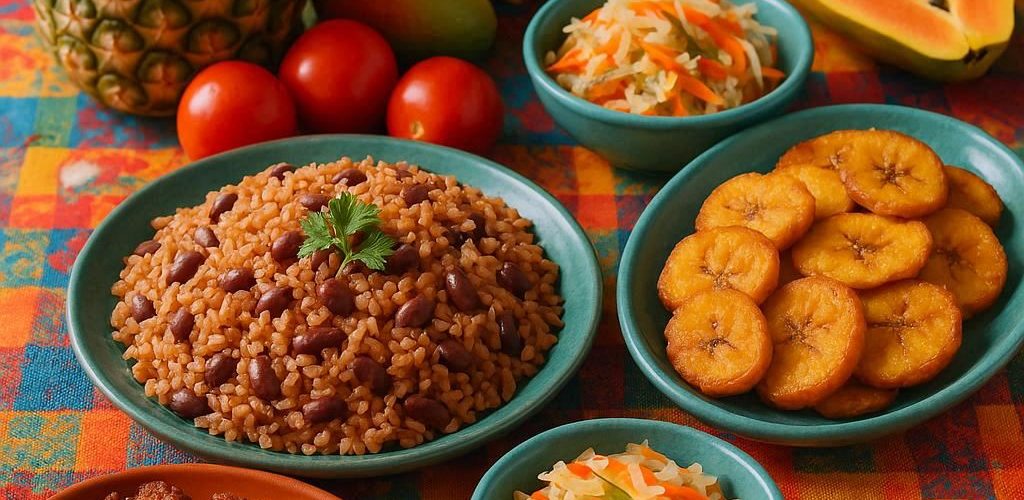Haitian cuisine is a vibrant reflection of the island’s culture, history, and the diverse influences that have shaped it over the centuries. With roots in African, French, and Taino traditions, the food of Haiti tells a story that goes beyond just sustenance; it embodies the soul of the Haitian people. For those curious about Haiti’s culinary delights, understanding the key ingredients and traditional dishes is the first step in exploring this flavorful world.
Foundational Ingredients
At the heart of Haitian cooking are a few staple ingredients that reflect the country’s agricultural bounty. Rice, beans, and root vegetables such as yams, cassava, and sweet potatoes form the foundation of many meals. These ingredients are often paired with spices like garlic, thyme, and Scotch bonnet peppers, which provide distinctive flavors and a touch of heat to the dishes.
Another essential element of Haitian cuisine is the use of fresh herbs and citrus. Parsley and green onions contribute freshness, while lime juice adds acidity that elevates various dishes. Coconut is also a common ingredient, lending a creamy texture and subtle sweetness to many recipes.
Signature Dishes to Savor
When it comes to iconic Haitian dishes, there are several must-try items that showcase the richness of the culinary landscape. One of the most beloved is “Griot,” made from marinated pork that is slow-cooked and then fried to perfection. Typically served with a side of rice and bean, this dish is a staple for celebrations and family gatherings.
Another popular dish is “Djon Djon,” a flavorful rice dish made with black mushrooms that are unique to Haiti. The rice, cooked with the mushrooms, is rich in flavor and often accompanies meat or poultry. For those seeking a vegetarian option, “Légumes” offers an assortment of stewed vegetables, often blessed with a flavorful broth made of spices and sautéed onions.
“Pikliz” is also a standout, serving as a tangy and spicy condiment made from pickled vegetables, usually consisting of cabbage, carrots, and Scotch bonnet peppers. It adds an exciting burst of flavor to any dish and is essential for those who enjoy a little kick in their meal.
Street Food Scene
Haitian street food is equally tempting and offers a more casual yet authentic way to experience local flavors. Vendors can be found throughout cities and towns, serving up delights like “Akra,” deep-fried dough made from malanga root and spices, and “Paté,” a flaky pastry stuffed with meat or vegetables. These bites offer a quick and delicious way to enjoy Haitian culture on the go.
Cultural Significance
Food in Haiti is more than just a means to satisfy hunger; it is intertwined with cultural traditions and communal practices. Meal times often bring families and communities together, emphasizing the importance of sharing and celebrating life. Festivals, holidays, and gatherings are often centered around feasting, where recipes passed down through generations are cherished and honored.
In conclusion, Haitian food is a vibrant tapestry woven from rich history and diverse culinary traditions. For those seeking a unique and flavorful experience, the dishes of Haiti are sure to inspire the palate and bring a bit of the island’s spirit to the table. Whether you’re enjoying a home-cooked meal or sampling street food, the flavors of Haiti offer a memorable journey that reflects the resilience and creativity of its people.




Add comment